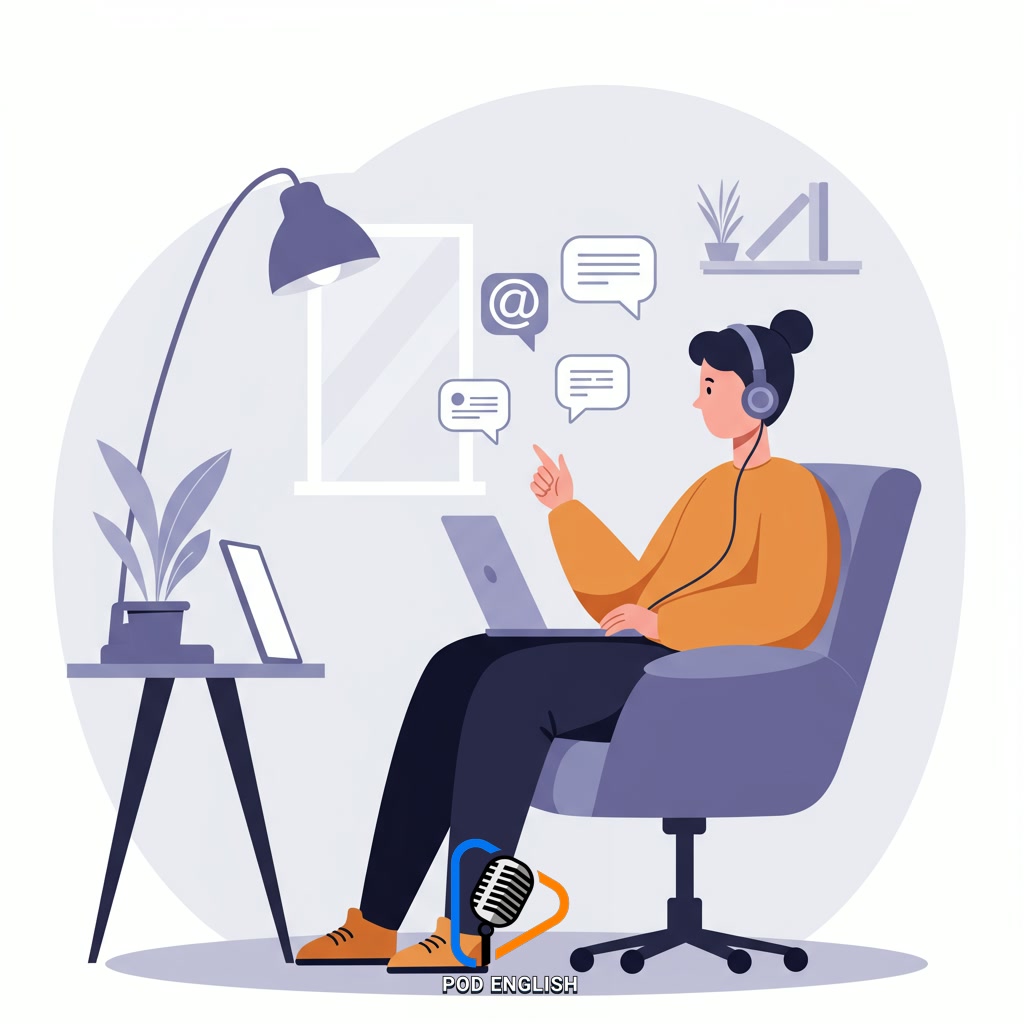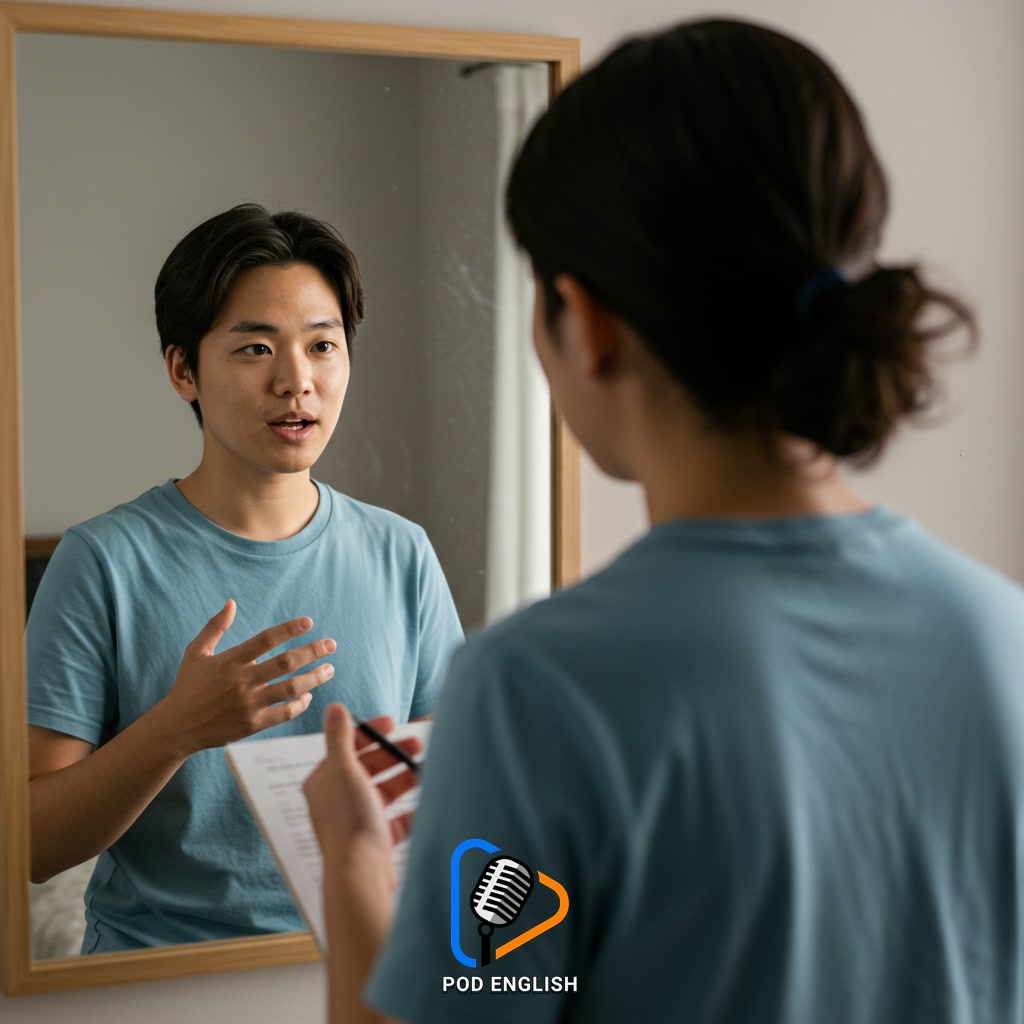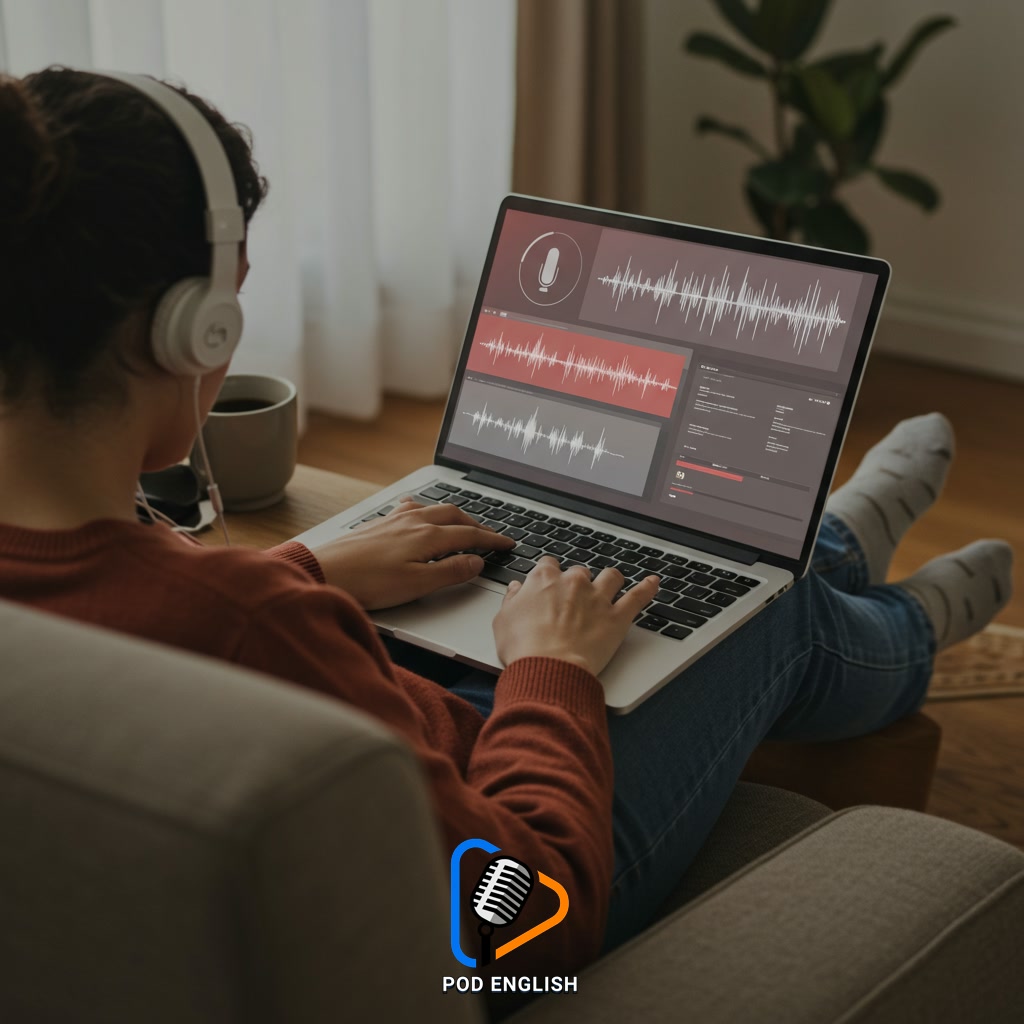Learn English
Learn English: 7 Proven Methods for Improving Speaking Skills Alone

This content details effective strategies for individuals looking to enhance their English speaking abilities independently. It outlines seven verified approaches designed to help learners improve fluency and articulation when practicing alone. The focus is on practical techniques for self-improvement in spoken English.
Table of Contents
- Section 1: Introduction: Why Improve English Speaking Skills Alone?
- Section 2: The Benefits of Practicing English Speaking by Yourself
- Section 3: Method 1: Shadowing Native Speakers
- Section 4: Method 2: Recording Your Own Voice
- Section 5: Method 3: Talking to Yourself Regularly
- Section 6: Method 4: Using Mirror Practice
- Section 7: Method 5: Describing Your Environment
- Section 8: Method 6: Practicing with Scripts and Dialogues
- Section 9: Method 7: Leveraging Online Resources (Podcasts, Videos)
- Section 10: Tips for Staying Motivated and Consistent
- Section 11: Conclusion: Achieving Fluency Through Solo Practice
Section 1: Introduction: Why Improve English Speaking Skills Alone?
Improving English speaking skills is a key goal for many learners, but finding practice partners isn’t always easy or convenient. This is where practicing alone becomes incredibly valuable. It offers flexibility, allowing you to practice whenever and wherever suits you best, without needing to coordinate schedules or feel pressure from others. Practicing independently also lets you focus entirely on your own pronunciation, fluency, and vocabulary without interruption. It provides a safe space to experiment, make mistakes, and build confidence at your own pace. Whether you lack opportunities to speak with others or simply prefer a focused, solitary approach, mastering solo practice techniques is a powerful way to accelerate your progress and achieve greater command of spoken English.

Introduction: Why Improve English Speaking Skills Alone?
Section 2: The Benefits of Practicing English Speaking by Yourself
Practicing English speaking by yourself offers numerous advantages, especially when finding a partner is challenging. One major benefit is the incredible flexibility it provides; you can practice anytime and anywhere that suits you, fitting learning into your busy schedule. Furthermore, practicing alone eliminates the potential fear of judgment from others, allowing you to feel more comfortable experimenting with new words and sentence structures without embarrassment. This solo environment enables deep focus on specific areas you want to improve, like pronunciation or intonation, and allows for unlimited repetition until you feel confident. Ultimately, this self-guided practice builds confidence and helps you become more fluent at your own pace.

The Benefits of Practicing English Speaking by Yourself
Section 3: Method 1: Shadowing Native Speakers
Shadowing is a highly effective technique where you listen to native English speakers and immediately repeat what they say, trying to match their pronunciation, rhythm, and intonation. Think of it like being an echo. Find audio or video content with clear speech, such as podcasts, audiobooks, or YouTube videos designed for learners or featuring natural conversations. Start with shorter clips. Listen carefully, then try to speak along simultaneously or right after the speaker finishes a sentence or phrase. This method trains your mouth and tongue muscles to produce English sounds correctly and helps you internalize the natural flow of the language. Regular practice with shadowing can significantly improve your accent and speaking confidence when practicing alone.

Method 1: Shadowing Native Speakers
Section 4: Method 2: Recording Your Own Voice
Recording your own voice is a powerful way to improve your English speaking skills independently. Unlike simply speaking aloud, recording allows you to become your own listener and critically analyze your performance. Use your smartphone or a simple voice recorder to capture yourself speaking, perhaps retelling a story, describing your day, or reading a short passage. The real benefit comes when you listen back. Pay close attention to your pronunciation, intonation, rhythm, and even the clarity of your thoughts. You’ll often notice errors or awkward phrasing you weren’t aware of while speaking. This self-assessment helps you identify specific areas for improvement, making your practice more focused and effective. Regularly recording and listening back also provides a clear track of your progress over time, which can be very motivating.

Method 2: Recording Your Own Voice
Section 5: Method 3: Talking to Yourself Regularly
Moving beyond recording, another highly effective method for independent speaking practice is simply talking to yourself regularly. This low-pressure environment allows you to experiment with new vocabulary and grammar structures without fear of judgment. You can narrate your daily activities aloud, describe objects around you, or even practice hypothetical conversations. By consistently articulating your thoughts in English, you train your brain to process and produce language more quickly and fluently. While it might feel strange at first, this constant, informal practice builds confidence and helps you identify areas where you hesitate or struggle, complementing the more analytical approach of recording.

Method 3: Talking to Yourself Regularly
Section 6: Method 4: Using Mirror Practice
Building on the idea of speaking aloud to yourself, incorporating a mirror into your practice session can significantly boost your progress. When you talk in front of a mirror, you get immediate visual feedback on your facial expressions, mouth movements, and overall body language. This allows you to see how you look when you speak English, helping you identify and correct awkward expressions or unnatural postures. It also makes the practice feel slightly more like a conversation, even though you’re talking to yourself. Pay attention to your mouth shape as you pronounce words; seeing this can help you refine your articulation. This method adds a crucial visual dimension to your solo speaking practice, making it more dynamic and effective for self-correction and building confidence.

Method 4: Using Mirror Practice
Section 7: Method 5: Describing Your Environment
Following the practice of speaking aloud, another highly effective solo method is to simply describe your surroundings. Look around the room you are in, or even look out a window, and start saying aloud what you see. Name the objects, describe their colors, shapes, and textures. Talk about the actions happening, like a bird flying or a car passing. This forces you to access vocabulary related to everyday items and actions quickly and practice forming sentences spontaneously. You don’t need perfect grammar; the goal is fluency and getting comfortable speaking without hesitation. It’s a practical way to integrate English into your immediate reality and build descriptive language skills naturally.

Method 5: Describing Your Environment
Section 8: Method 6: Practicing with Scripts and Dialogues
Building upon the practice of speaking freely, Method 6 introduces a more structured approach: practicing with pre-written scripts and dialogues. This technique involves finding materials like scenes from movies or TV shows, excerpts from plays, or even simple conversational scripts designed for learners. Your task is to read these aloud, focusing not just on the words but also on intonation, rhythm, and natural pauses. You can take on different roles in a dialogue, switching between characters to practice varied speech patterns. This method helps you internalize common English phrases, sentence structures, and the flow of native conversation, providing a concrete framework to improve your pronunciation and fluency in a controlled environment.

Method 6: Practicing with Scripts and Dialogues
Section 9: Method 7: Leveraging Online Resources (Podcasts, Videos)
Building upon structured practice, the seventh method harnesses the vast array of online resources available. Podcasts and videos offer authentic English spoken by native or fluent speakers in diverse contexts, from casual conversations to formal lectures. To leverage these effectively for speaking practice alone, listen actively to the pronunciation, intonation, and rhythm. After listening, try shadowing – speaking simultaneously with the audio or video. Alternatively, pause and repeat phrases or sentences, focusing on mimicking the speaker’s delivery. Choose content that interests you to stay motivated, and don’t hesitate to rewind and practice challenging parts multiple times. Analyze how speakers connect words, use contractions, and express emotion through their voice. This method provides exposure to natural speech patterns and valuable material for repetition and imitation, directly enhancing your own speaking fluency and naturalness.

Method 7: Leveraging Online Resources (Podcasts, Videos)
Section 10: Tips for Staying Motivated and Consistent
Mastering English speaking alone requires not just effective methods but also sustained motivation and consistency. To stay on track, set clear, achievable goals for your practice sessions – perhaps focusing on a specific pronunciation point or vocabulary set each week. Establish a regular routine, even if it’s just 15-20 minutes daily, and try to stick to it. Track your progress, maybe by recording yourself periodically, to see how far you’ve come; recognizing improvement is a powerful motivator. Don’t forget to celebrate small victories, like understanding a difficult podcast segment or successfully using a new phrase. While practicing alone, connecting with online communities or forums can provide encouragement and shared experiences. Finally, always remember your initial reasons for wanting to improve your English; keeping your ‘why’ in mind helps fuel your commitment during challenging moments.

Tips for Staying Motivated and Consistent
Section 11: Conclusion: Achieving Fluency Through Solo Practice
Achieving fluency in English speaking through solo practice is a highly attainable goal, as the methods discussed demonstrate. By consistently applying techniques like self-talk, recording your voice, shadowing native speakers, and utilizing language learning apps, you actively engage with the language in a low-pressure environment. This independent effort allows for focused repetition, experimentation with pronunciation and grammar, and building confidence at your own pace. While motivation and consistency are key drivers, the practical application of these solo strategies directly contributes to improved articulation, expanded vocabulary in spoken contexts, and ultimately, greater ease and naturalness when speaking English. Embrace the power of practicing alone; it’s a proven pathway to unlocking your full speaking potential.

Conclusion: Achieving Fluency Through Solo Practice













